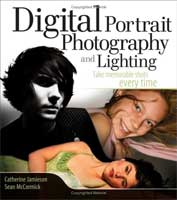Just about every digital photo can use a little bit of sharpening. You should definitely experiment with the sharpening tool in your photo editor of choice (preferably, your editor has unsharp mask). But you don’t want to overdo it or you’ll see sharpening “halos” around objects in your photo: bright and dark lines near areas of high contrast. Here’s a quick and simple tip to reduce halos in photos that have a combination of low and high contrast areas:
- When you are ready to sharpen your photo (sharpening should be your very last step), flatten all layers.
- Duplicate the remaining layer.
- Sharpen the top layer to get the best result possible.
- Now grab the eraser and simply brush away any problem areas that have been over-sharpened. The bottom, unsharpened layer will show through in those spots. If your photo editor supports it, you can even erase those areas with partial opacity to customize the amount of sharpening.

 “A portrait is a likeness.”
“A portrait is a likeness.” 






